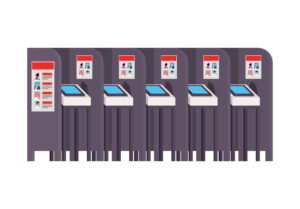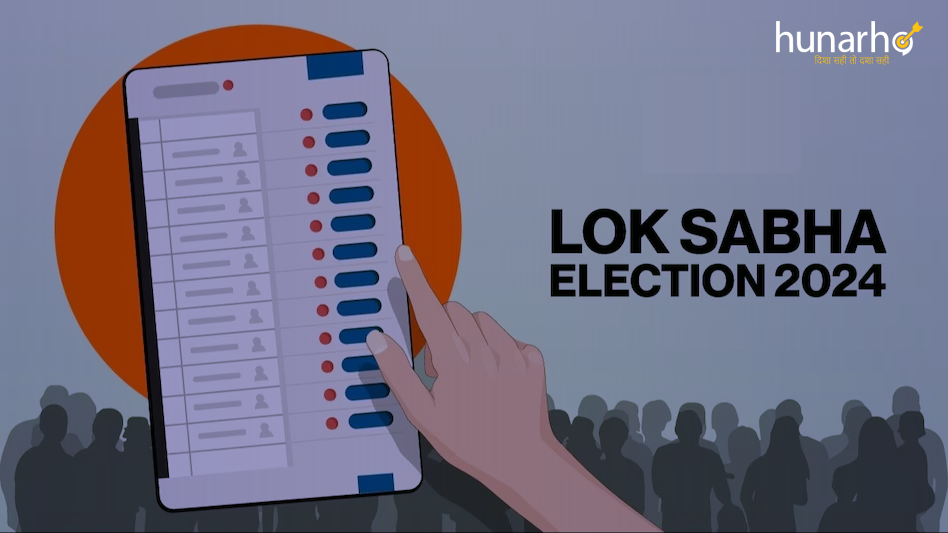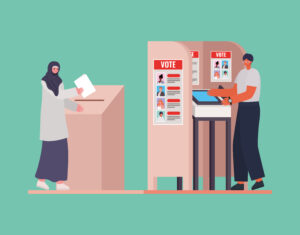Tech Used in Lok Sabha Elections 2024
The evolving landscape of electoral technology.
Importance of understanding tech used in elections 2024.
Understanding how EVMs function
Why electronic voting machines are preferred
Harnessing data analytics for electoral insights
Addressing fears of EVM malfunction and tampering
Rigorous testing protocols for EVM usability
The role of VVPAT in ensuring transparency
Making EVMs accessible in areas with limited electricity
Elections 2024
Did you cast your vote during this election? If yes then you must be familiar with the EVMs used to do it! Right? So when did we first start to use the Electronic Voting Machines(EVMs)? And again why are we using EVMs and how were elections carried out before? Let’s look into it one by one!
So we all know the General Lok Sabha Elections are on the verge and every vote matters! We are very much familiar with the EVMs today but earlier there used to be ballot boxes and paper tokens, the voter had to punch the paper token and put it in the ballot box. It was a very analog technique and since human interference was very much involved, errors were a definite occurrence. Even the counting was pretty much manual so it was necessary to get automation and tech involved.
Debriefing EVMs
Electronic Voting Machines or EVMs are the foundation of using technology in the decision-making for any country! The biggest decision any country could make is electing the one, choosing the right candidate, and giving power to their choice of political party!
Paper and ballot boxes used earlier were fine but had their downsides. Wastage of paper, human errors, tampering, false votes, accounting errors, and whatnot. EVMs have streamlined and sped up this process with a minimal to zero margin of error. These machines use new-age technology to precisely capture and save votes in a much more reliable and efficient manner helping save the environment as a byproduct. However, to keep things fair there is always a constant need to monitor the EVMs to detect and deter any fraudulent activities.
The first use of EVM in India was in 1982 in the by-elections to Parur Assembly Constituency of Kerala. It was not a successful deployment though due to technical insufficiencies so the idea was withheld for a brief amount of time, it was again used in 1998, with further development in the years 2001, 2004, 2008 and later in 2013 when VVPAT was introduced it was put to experiment in Nagaland’s(Noksen – Assembly constitution), following which the Supreme Court of India ruled out the judgment to use EVMs in 2014 General Elections in a phased manner, since the technology has evolved and EVMs are less susceptible to errors the mass has used it ever since.
Importance of understanding tech used in Elections 2024
Tech in the democratic environment prevails as a prominent feature as seen by the election patterns ever since 2019 and even more so during the 2024 elections in India. As countries around the world prepare for elections, the use of tech is now transforming how campaigns are planned, votes are cast, the role of social media, AI in campaigning, Big data analytics, Cybersecurity measures, online advertising, and the list goes on…
So much goes on in the backend that is unimaginable to comprehend all at once! Technology is ever-changing and updates are always on their way. Without the use of these technologies, modern-day elections cannot be executed as efficiently as we are witnessing at the moment.
Understanding how EVMs function
An electronic voting machine consists of two units: a control unit (CU) and a balloting unit (BU). The Balloting Unit connects to the Control Unit via a five-meter cable. The Control Unit remains with the Presiding Officer or Polling Officer, while the Balloting Unit is placed within the voting compartment. The Polling Officer in charge of the Control Unit presses the ‘Ballot’ button to release the ballot for voters. Voters can vote by clicking the ‘Candidate’ button (blue) on the Balloting Unit for their preferred candidate and symbol.
Devised and designed by ECI in collaboration with Bharat Electronics Ltd. & Electronic Corporation of India Ltd. These were designed to work on battery power so that it can be used even in areas with no electricity connection.
A maximum of 2000 votes can be cast in one EVM, with 24 balloting units consisting of 384 candidates including NOTA, which can be served in the newer models (Manufactured After 2013).
Source: https://ceomanipur.nic.in/documents/FAQ%20on%20EVM.pdf

Another component VVPAT (Voter Verifiable Paper Audit Trail) machine is connected to the EVM via a printer port which lets the voter verify their votes before being cast into the ballot to remove the chance of fraud or rigging.
Why electronic voting machines are preferred
The use of EVMs brings an important change in electoral administration, with a number of advantages over traditional voting systems. By replacing bulky paper ballots with user-friendly electronic interfaces, EVMs streamline the voting process, reducing waiting times and improving voter turnout. To add to the benefits, the instantaneous calculation of votes allows for the quick reveal of results, which increases public trust in the political process.
Using data analytics for electoral insights
Data analytics has changed how political parties are looking at election insights today, we are no strangers to the fact that in this day and age Data is king, and how to leverage the insights extracted from this is making it possible for them to make their strategies.
But why suddenly are we talking about data and strategies all of a sudden when discussing EVMs? Well, EVMs collect data! And in huge numbers. Consider this, according to the census India has a population of 1.4 Billion (140 crores) in total and 70% of us are eligible for voting i.e. 980 million (98 crores). That is a huge amount of data to be counted across numerous candidates, here data analytics and data science come into play. The PO (Presiding Officer), while the counting goes on in the backend is constantly analyzing the count and shares the insights with the public.
Addressing fears of EVM malfunction and tampering
Even with the technological advances, EVMs are not completely immune to malfunctioning or tampering attempts, although even the attempt is punishable by law. There still are concerns regarding whether EVMs could be prone to hacking, software glitches, or deliberate manipulation.
The EVMs are hence mechanically and technologically safeguarded to prevent any tampering or manipulation. The software used in these EVMs is burned into a One-Time Programmable/Masked chip (Hardware) to avoid manipulation or change.
Additionally, neither cable nor wireless systems are used to connect any other computers or systems to these EVMs. Therefore, data cannot be altered in any way.
Rigorous testing protocols for EVM usability
EVMs are tested thoroughly for their usability and errors. Before the machines are deployed for elections FLC (first Level Check) is done for each EVM by the manufacturing firms, all defective EVMs are kept separately and not used in the elections. This FLC is done in the presence of representatives of all recognized political parties while being videographed.
A pink paper seal is affixed to the tested units (CU), and if at later stages this seal is found broken the EVM is not used for taking polls.
Additionally, the Presiding Officer conducts a mock poll in front of the candidates and their authorized agents prior to the actual poll in order to make sure that the EVM is functioning correctly and to allay any concerns raised by the candidates or their representatives. A trial poll certificate is then provided. This is completed one hour before the poll’s planned start time.
The role of VVPAT in ensuring transparency
An important step toward improving the transparency and verification of EVMs is the addition of VVPAT (Voter Verifiable Paper Audit Trail). Basically, VVPAT allows voters to see what choice they have made and check if it matches with the one they have selected. VVPAT creates a paper record of every vote that is cast. This physical paper trail gives voters the trust that their votes will be fairly represented in the final tallying and acts as an essential precaution against any malfunctions or tampering.
Making EVMs accessible in areas with limited electricity
Imagine this, In villages, where electricity is available just a few hours a day, how will people be able to cast their votes? They are the ones needing change, and if they could find the party that could bring them all the missing perks others in the towns and cities enjoy, they need to vote!
To do so EVMs are required to not be dependent on any sort of electrical supply to be connected at the station, instead if the battery unit is on board it will be as easy to get EVMs Working in the most remote areas too.
Hence with the help of Electronic Corporation of India Ltd. and Bharat Electronics, EVMs were designed to work on a standard 7.5-volt alkaline power pack, made using 5 AA size cells with 1.5 volts of power output.
This also eliminates the use of cables running over and around the system making it even more reliable.
FAQs
Q. Can electronic voting machines be hacked?
A. No, EVMs are designed and developed in such a way that if someone tries to hack or tamper with it, the whole system will be bricked, additionally, there are no external wires or wireless modules connected even for power ensuring its safety.
Q. How does the Voter Verifiable Paper Audit Trail (VVPAT) work?
A. VVPAT generates a paper trail for every vote that is cast, also before the vote is cast it shows the symbol of the selection for the voter to verify.
Q. Do VVPAT machines need electricity to work?
A. VVPAT machines do not require electricity to work, instead, they are designed and developed to work on 7.5-volt batteries made up of 5 AA size 1.5-volt units.
Q. When was the first EVM used?
A. The first kind of EVM was used in the by-elections of Parur Constituency of Kerala in 1982.









